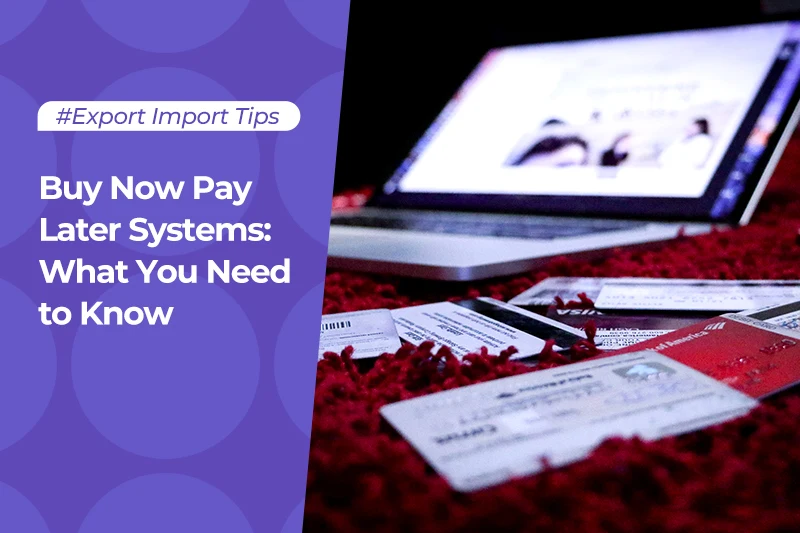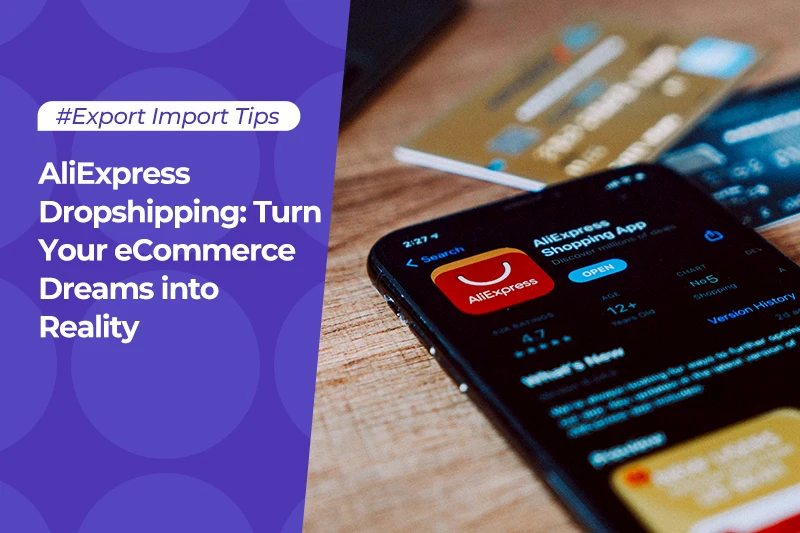Export from India: a guide for Indian SME Exporters

If you’re an Indian SME, hoping to expand and sell your products overseas, Alibaba.com can help, advise and support you. Reaching international buyers and expanding into new markets is an opportunity that many companies want to take advantage of, but it can be a complicated process. The current economic climate is unstable, due to the global pandemic, and this has put off a lot of companies in India from exporting goods abroad. But with our help, advice and international insight, you can start exporting products overseas confidently.
In this ultimate guide for Indian exporters, we’re going to discuss key data relating to buying trends, international markets and explain how to start exporting goods from India to other countries. Learn how to adapt to a global pandemic and take advantage of new opportunities for Indian SMEs able to export products and adapt their business to an ever-changing global marketplace.
Table of Contents
Exporting from India & the global pandemic
It’s clear that the global pandemic has created new and more complex challenges for exporters around the world, but how have Indian SMEs been affected in particular, and are there new emerging opportunities to grab?
According to the UNCTAD, United Nations Conference on Trade and Development, India has been one of the most affected economies in 2020, and the global pandemic has had a trade impact of approximately $348 million1. Since travel restrictions have been put in place, and manpower has become limited due to lockdowns and social distancing measures, India’s export industry has suffered significantly.
The most affected sectors during the global pandemic in India have been the chemicals, textiles, automotive, machinery, precision instruments and communication equipment, and this has been down to a supply chain issue, caused by travel restrictions, strict border control and national lockdowns.
In order to combat this issue, businesses in India need to think outside the box and consider manufacturing products and goods themselves. Sourcing key components and essential parts for products from India rather than from an overseas manufacturer will help the country to advance. Diversification is also required to safeguard a steady income and adapt to changes in buyer behavior around the world.
So, what are the current opportunities for Indian SMEs in relation to exporting internationally?
As travel, tourism and hospitality struggle, other industries are thriving this year. As the demand for hand sanitizers, professional cleaning products, pharmaceuticals and health and safety equipment grows, Indian SMEs can rethink their business model and start designing and manufacturing goods to help people protect themselves, their loved ones and their employees.
With strict lockdowns in place around the world, the need for home entertainment is also on the rise, and video games, apps, headphones, VR and traditional board games are creating a new creative market for companies able to meet this growing demand. DIY and interior design are also rising in popularity, along with craft, homeschooling and art supplies. If you’re reactive and innovative, these uncertain times can work in your favor and help your company to thrive.
Discover the top exported goods from India
The top 10 exports from India are as follows:
- Mineral fuels
- Precious metals and gemstones
- Vehicles
- Computers, machinery and electronics
- Pharmaceuticals
- Apparel and accessories
- Organic chemicals
- Iron and steel
- Leather footwear
- Rice and raw sugar
To adapt to the global pandemic and new buyer trends, Indian SMEs hoping to export overseas can consider the following new and emerging markets in order to diversify and rethink their business model and product range.
- Casual, comfortable footwear and clothing. As more people work from home during lockdowns and social distancing, the search popularity of the term ‘slippers’ has increased by 189% on Alibaba.com from Feb 2020 to July 2020.
- Medical equipment, health and safety signage, hand sanitizer stations and disinfectants. There is a huge demand for PPE items online and Alibaba.com has experienced a significant increase in searches relating to ethanol, isopropanol and carbomer, all used to manufacturer hand sanitizer.
- Packaging and home office equipment to meet the increasing number of new entrepreneurs and start-up businesses. As unemployment figures continue to rise, people are using their time wisely to open and launch home businesses. Plastic packaging orders on Alibaba.com are up by 200%.
- Electronic devises and home office essentials. From headphones and video games to audio devices and consoles, as more people than ever before start to work from home and families try to entertain children, there has been a sharp increase in demand for electronics, office equipment and entertainment such as drones, VR headsets, headphones and game consoles and as Christmas approaches, this demand is set to increase further.
Where do Indian SME exporters send products?
The United States is India’s largest trading partner, with goods imports from India valued at $57.7 billion in 20192. However, the United Arab Emirates and China are also top export destinations and account for $29.7 billion and $17 billion3. The UK also imports a lot of goods from India, and there is a lot of opportunity still to be had by attracting UK buyers.
Why Indian SMEs should sell internationally
The current economic climate is actually a prime time to sell internationally and start exporting overseas as an Indian SME. As global corporations struggle to stay afloat due to their daily expenses, small and medium-sized companies can seize this opportunity and start expanding their business and selling goods around the world. The trick is, keep overheads and costs low to continue to trade during uncertain economic times.
Plus, lockdowns have created one huge advantage for online businesses, a captive audience. Being bored at home can actually help Indian SMEs to survive the global pandemic, as buyers browse online searching for products to keep them entertained, fit and working from home efficiently.
Here are some more benefits of exporting products from India.
Benefits of exporting from India
There are actually export incentives for Indian SMEs to attract international buyers and promote cross-border commerce. To encourage businesses to export goods overseas, the Indian Foreign Trade Policy provides a range of incentives such as a tax cut for exported goods to increase competitiveness in the global market.
Schemes such as Advance Authorization4 allows duty-free import of goods that are used to manufacture products ready for export. This can include raw materials, oil and fuel. The Duty Drawback scheme provides a refund to Indian exporters on the customs and excise duties paid on input and raw material, as well as services used in the manufacturing process of export products.
India is also at an advantage in terms of geo-economics, with strong relationships with US and the Middle East in terms of trade relations. Plus, India also shares borders with seven countries, including Pakistan and China, making it far easier to transport products via road or rail, if travel restrictions make it increasingly difficult to send products by air or sea.
Challenges of exporting from India
One major challenge for Indian exporters is that the country relies heavily on importing goods from overseas in order to manufacture products and export goods around the world. If this delicate supply chain is disrupted, as we are now seeing with the global pandemic, Indian SMEs will struggle to produce and distribute goods cheaply and quickly. This issue could give other countries such as Vietnam, Cambodia and Nepal the upper hand. To counteract this problem, Indian companies should try to source key components needed for the production of goods from their own country or rethink the products they supply.
How to start an Indian SME export business
To start exporting goods around the world, first you will need to conduct thorough research in order to succeed. From choosing a product range and industry to focus on, to analyzing your main competitors, knowledge is power in the world of international e-commerce, so invest time into researching buyer trends, consumer behavior, products in demand and gaps in the market.
Alibaba.com has a library of industry reports and a free demand signal tool to empower sellers on the platform and educate exporters on the top trending products, buyer trends and industry specific data and analytics.
There will also be certain requirements and documents that you will need in order to ship goods abroad, so to help you understand how to open an export business from India, we’ve broken down the essential steps for you. First comes an initial research phase and planning stage, followed by the practical and legal requirements and considerations of running an Indian SME export company.
1. Finalizing your product range
After deciding which industry you’re going to focus on, you should consider your product range. During the global pandemic it’s a good idea to choose items that you can manufacture and sell without the need to source key components from overseas. This will prevent delays with orders and disappointing customers.
2. Research and define your overseas target market
Once you have a product range ready, develop customer personas to paint a picture of who your customers will be. Ask yourself the following questions about your target audience:
- Do they speak English, Chinese or Arabic?
- Do they value a fast delivery?
- Are they interested in bulk purchases or single items?
- Will you be offering a sample or not?
- Is there a minimum order requirement?
- Are they using a smartphone, tablet or desktop device?
- Are they the end consumer or another business?
- Is price a concern or quality more important to them?
By using Alibaba.com’s international marketplace to sell your products and export from India, you will be able to reach buyers actively sourcing products from around the world easily.
Before you expand your business or explore international markets, it’s important to consider the reality of running an Indian export business and whether you understand the rules and regulations for exporting overseas. So, let’s discuss how much it will cost to run and manage an export company.
3. Rules & regulations for exporting overseas
Here are some legal requirements you’ll need to follow to open an import-export business in India.
Obtain PAN card:
You will need to apply for a PAN Card which can be done online via the Income Tax Department5.
Register your business:
To legally run an import-export company in India, you’ll need to register your business with the government. You will also need to get a VAT registration certificate.
Open a bank account:
It’s best to open a business bank account or at least a separate bank account to manage your export business. This will help you separate your business finances from your personal bank account and prevent any confusion when it comes to paying taxes and calculating your expenses and profit margins.
Have an import export code (IEC):
It is mandatory to have an import-export code to operate as an import-export business in India. You can apply for an IEC online at DGFT (Director General of Foreign Trade) website6. After you receive the IEC you can then apply for a registration-cum-membership-certificate (RCMC). RCMC is a membership certificate issued for 5 years by Export Promotional Councils or commodity board of India. It can give exporters access to various benefits under the Foreign Trade Policy (FTP) like duty drawback.
Find buyers for your product:
There are several ways you can approach buyers and importers, both online and offline, by attending exhibitions and trade fairs, using resources of government bodies, building a website of your own, or registering a seller account on a global marketplace like Alibaba.com that connects buyers and sellers. The COVID-19 pandemic has forced both buyers and sellers to go digital in a massive way, and investing in eCommerce represents huge opportunities for exporters to grow their business.
Check out our comprehensive guide on How to find international buyers for your export business that addresses why, what, where, who, and how to find buyers and get export orders to succeed.
Secure a logistic company:
To arrange international deliveries and ship products around the world, you can consider hiring a logistics or freight forwarding company.Have a customs broker:
To help with customs clearance process, you should also consider hiring a customs clearing agent or a customs broker who will be able to help prepare all the relevant documents and paperwork you’ll need to send products abroad and ensure orders arrive safely and avoid unnecessary costs or delays.
4. Expenses of running an Indian SME
As an Indian SME exporting internationally, there will be expenses and costs that you’ll be responsible for. From storing products in warehouses, customs duty, transporting goods around the world, to business insurance, these fees can quickly add up, and should be considered in order to format your pricing structure. Ignoring these key expenses of running an export business, you mean risking money, rather than making a profit. Let’s go over some common fees and expenses you will likely face as an Indian international exporter:
Logistics & freight: A seller will be responsible for transporting and storing goods. This can include transporting items from one warehouse to another, to shipping cargo to a port.
Insurance: This depends on whether you want to offer customers insurance for the goods or not. Having an insurance policy to protect your customers will help you to build trust and increase sales, but it is not a legal requirement.
Buying stock: Investing in products and goods can be expensive and cause a cash flow problem. This is why researching market demand and buyer behavior is so important for exporters.
Paying employers: Running a business will often involve hiring employees and if you plan to expand overseas, you might need to hire more people. This expense must be taken into consideration in order to run a profitable business.
Documentation and duty: Depending on the Incoterms used, an exporter can be responsible for custom proceedings and should be able to provide all the relevant documentation to export products. This involves paying for freight forwarding and terminal charges.
Packaging and labeling: Protecting delicate items while in transit comes down to high-quality packaging. As an Indian SME, you’ll need to pick your packaging carefully or risk dealing with unhappy customers when their orders arrive damaged. Invest in packaging and labels and create a positive unboxing experience for your customers and generate positive reviews and repeat buyers.
5. Figuring out international billing & payments
Making a sale is great news but how will you get paid? There are four commonly used payment methods by international buyers that you should be aware of:
Credit card:
Easy to use and able to secure an advance payment for sellers.
Wire Transfer:
Secure and preferred for cash in advance payments, you will need to provide payment details and your business address to process an international payment. There will usually be a fee involved and this can either be added to the buyer’s bill or paid by the seller.
Escrow Service:
Giving customers the confidence that their goods will be sent, an Escrow service can be beneficial for both sellers and international buyers. A third party will hold onto the payment and only release it once the goods have been received.
Payment by check:
Rather outdated, this is considered the last option if buyers can’t accept another payment method.
How Shilpi Impex, an Indian jewelry SME, see his business grew worldwide with Alibaba.com
Mr. Sanjeev Gupta founded his small jewelry business Shilpi Impex in 1999 in Jaipur, India. Shilpi Impex produces 350 varieties of semi-precious stones as well as silver jewelry and brass jewelry. It has been a Alibaba.com gold supplier since 2010. For Shilpi Impex, Alibaba.com is a true global B2B trade platform to attract quality buyers from worldwide. It’s selling on Alibaba.com enables him to expand his business to now 30 countries and helps him fulfill his export dreams.
“I always dreamt of my business taking off, and Alibaba.com gave it wings.”
Listen to his inspiring story and see how Alibaba.com has enabled him at every step and helped him fulfill his dreams.
Want to know more about how Alibaba.com help Indian exporters like you grow your business and get more orders? Speak to an expert now.
References:
1. https://economictimes.indiatimes.com/news/economy/foreign-trade/trade-impact-of-coronavirus-epidemic-for-india-estimated-at-348-million-dollars-un-report/articleshow/74487020.cms
2. https://ustr.gov/countries-regions/south-central-asia/india
3. http://www.worldstopexports.com/indias-top-import-partners/
4. https://www.dgft.gov.in/CP/?opt=adnavce-authorisation
5. https://www.onlineservices.nsdl.com/paam/endUserRegisterContact.html
6. https://www.dgft.gov.in/CP/
Start your borderless business here
Tell us about your business and stay connected.
Keep up with the latest from Alibaba.com?
Subscribe to us, get free e-commerce tips, inspiration, and resources delivered directly to your inbox.















